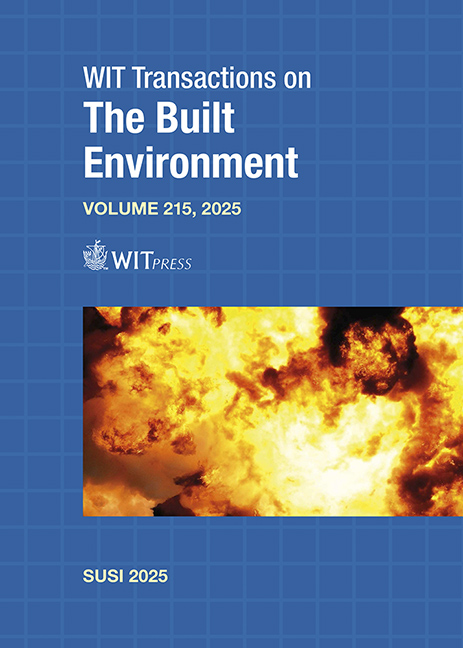A COMPRESSION-TO-TENSION STRESS CONVERSION JIG SET AND A DUMBBELL-SHAPED SPECIMEN FOR ARTIFICIALLY INDUCING NECKING DURING A SPLIT HOPKINSON PRESSURE BAR TEST
Price
Free (open access)
Transaction
Volume
215
Pages
10
Page Range
153 - 162
Published
2025
Paper DOI
10.2495/SUSI250141
Copyright
Author(s)
HYUNHO SHIN, GYUNGGEUN SHIN, JAEHYUCK LEE, HYUNSUK CHO, JUNMOO LEE, KYONG YOP RHEE
Abstract
A jig set was designed to convert compressive stress into tensile stress in a specialized dumbbell-shaped tensile specimen during a split Hopkinson pressure bar (SHPB) test. This setup intended to artificially induce necking during the SHPB test. The functionality of the aforementioned setup, made of 4340 steel, has been investigated using explicit finite element analysis. Two types of dumbbell-shaped specimens were examined: one with a uniform diameter in the tension-receiving section and the other with a reduced central diameter compared to the diameters at its ends. In the case of the uniform diameter specimen, no significant necking occurred until the first pulse passed through it. Conversely, necking occurred in the specimen with the reduced central diameter during the first pulse duration, resulting in higher strain rates, strains and temperatures in the neck region, confirming the effectiveness of the proposed CTC structure. Therefore, if the specimen’s constitutive parameters are inversely identified by tracking the bar signals derived from the necking specimen, these parameters are expected to accurately predict the material’s deformation behaviour up to higher strain rates, strains and temperatures, in contrast to the parameter set determined from the specimen that did not experience necking.
Keywords
constitutive model calibration, inverse parameter identification, Considère criterion





